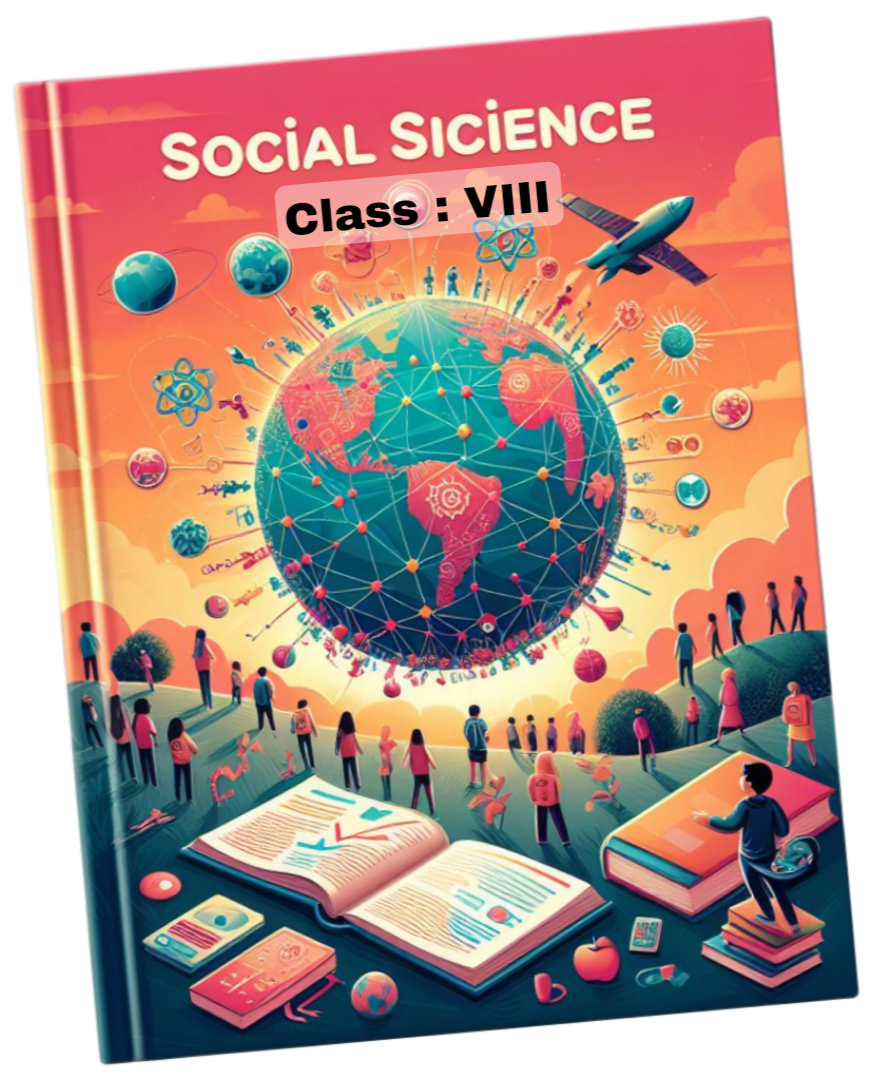Answer the following questions within 500 words each: 10x5=50
- · The Constraint of Economic Sovereignty: In a globalized economy, capital is hyper-mobile. States must compete for investment, leading to a "race to the bottom" in regulations, taxation, and labor standards to attract multinational corporations (MNCs). Decisions made in global financial centers like Wall Street or by institutions like the International Monetary Fund (IMF) can dictate economic policy in distant capitals, severely limiting a government's ability to manage its own economy independently.
- · The Rise of Supranational Governance: To manage cross-border issues, states have created and ceded authority to international institutions. The World Trade Organization (WTO) can rule a country's laws illegal if they are deemed protectionist. The European Union represents the most advanced form of this, where member states have pooled sovereignty in areas like trade, agriculture, and even currency, demonstrating that sovereignty is no longer an absolute, indivisible concept but is increasingly shared and contested.
- · Multinational Corporations (MNCs): The economic power of many MNCs rivals or surpasses that of smaller states. Their ability to move production, capital, and jobs across borders gives them immense leverage over national governments, influencing policy on taxation, regulation, and environmental standards. They are central players in the global political economy.
- · Non-Governmental Organizations (NGOs): Globalization has enabled NGOs like Amnesty International, Greenpeace, and the Red Cross to operate transnationally. They set agendas, monitor state behavior, provide humanitarian aid, and mobilize global public opinion, often holding states accountable to international norms on human rights and the environment.
- · Transnational Advocacy Networks and Terrorist Groups: Just as civil society benefits from global networks, so do illicit actors. Terrorist organizations like Al-Qaeda and ISIS use the internet for recruitment, financing, and propaganda, and global banking systems to move money. They represent a new, decentralized, and borderless security threat.
- · From National Security to Human Security: The concept of "human security" has gained prominence, emphasizing threats to individuals and communities rather than just to the state. These threats are inherently transnational and are exacerbated by globalization.
- · Economic Security: Global financial crises can now spread with contagion-like speed, as demonstrated in 2008, making economic stability a primary security concern.
- · Environmental Security: Climate change, pandemics, and resource scarcity are quintessential global issues. A virus originating in one country can become a global pandemic within weeks, and carbon emissions anywhere contribute to a planetary crisis. These challenges are indivisible and cannot be solved by any single state acting alone, necessitating unprecedented levels of international cooperation.
- · Cyber Security: The digital backbone of globalization creates vulnerabilities. Cyberattacks on critical infrastructure, disinformation campaigns, and economic espionage represent a new domain of conflict where borders are meaningless.
- · The Currency of Soft Power: A country's culture, political values, and foreign policies are now broadcast globally. The United States, for instance, has long derived significant influence from its entertainment industry and universities. Conversely, a country perceived as acting unilaterally or violating human rights can see its soft power erode, damaging its international standing and its ability to build coalitions.
- · The Networked World: In an interconnected world, the power to connect and to set the agenda in global networks (of finance, information, or technology) becomes as important as the power to command with military force.
- · Global trade and finance regulation
- · Climate change and environmental treaties
- · Nuclear non-proliferation
- · Transnational crime and terrorism
- · Public health and pandemic response
- · Inequality and Resentment: Globalization has created winners and losers, both between and within nations. This has fueled populist, nationalist, and anti-globalization movements that blame economic dislocation and cultural homogenization on global forces. Events like the Brexit referendum and the rise of protectionist trade policies in the US under the "America First" banner are direct manifestations of this backlash.
- · The Resilience of the State: While transformed, the state remains the primary actor in international politics. In times of crisis, such as the COVID-19 pandemic, citizens looked to national governments, not international institutions, for solutions. States reasserted control by closing borders, procuring medical supplies, and implementing fiscal stimulus, demonstrating that reports of the state's demise are greatly exaggerated.
- · A New "Multi-Plex" World: The result is not a borderless world, but what some scholars call a "multi-plex" world—a complex, layered system where globalized networks, resurgent states, and sub-national actors all interact, collaborate, and compete simultaneously.
- · "Pivot to Asia" and China's Shadow: The US strategic rebalance to the Asia-Pacific was a key driver. While India was initially hesitant to be formally enlisted, the US saw a strong, independent India as a natural partner in maintaining regional balance. China's assertive behavior in the South China Sea and along its borders began to align Indian and American strategic perceptions more closely.
- · Defense and Security Ties: Defense cooperation became the bedrock of the relationship.
- · Major Defense Partnerships: India began signing foundational agreements with the US, starting with negotiations for the Logistics Exchange Memorandum of Agreement (LEMOA), which was finally signed in 2016. This allowed both militaries to use each other's bases for replenishment and repair.
- · Military Trade: The US became a key defense supplier to India, with major deals like the $3 billion C-17 Globemaster and $2.1 billion P-8I Poseidon aircraft, enhancing India's strategic lift and maritime surveillance capabilities.
- · Diplomatic Engagement: High-level visits, including President Obama's visit as Chief Guest for India's Republic Day in 2015, symbolized the deepening ties. The joint strategic vision statements for the Asia-Pacific and Indian Ocean region in 2015 explicitly affirmed the importance of freedom of navigation and unimpeded commerce—a clear signal to China.
- · Naming the Challenge: The Indo-Pacific Framework: The Trump administration formally retired "Asia-Pacific" in favor of the "Indo-Pacific," a conceptual framework that geographically and strategically placed India at the center. This was operationalized through the revitalization of the Quadrilateral Security Dialogue (Quad) between the US, India, Japan, and Australia, elevating it to the ministerial level in 2019.
- · Elevating Defense Ties: The defense partnership deepened considerably.
- · Foundational Agreements: India signed the second foundational agreement, COMCASA (Communications Compatibility and Security Agreement), in 2018, enabling secure communication between US and Indian military platforms. In 2020, the last of the four, BECA (Basic Exchange and Cooperation Agreement), was signed, allowing for the sharing of high-end geospatial intelligence.
- · Military Status: The US designated India as a "Major Defense Partner" in 2016, a status unique to India, facilitating technology sharing to a level commensurate with its closest allies.
- · Trade Frictions: This period was not without significant challenges. The Trump administration's "America First" policy led to tough trade negotiations. The US revoked India's benefits under the Generalized System of Preferences (GSP) and raised concerns over tariffs and trade deficits, creating a point of persistent tension even as strategic cooperation advanced.
- · The Quad as a Central Pillar: Under Biden, the Quad has been institutionalized as a premier regional grouping, focusing on practical cooperation in areas like vaccine diplomacy (the Quad Vaccine Partnership), climate change, critical and emerging technologies, and maritime security. It functions as a key platform to demonstrate a shared commitment to a "free and open Indo-Pacific."
- · Technology and Supply Chain Cooperation: The partnership has expanded beyond traditional defense into critical domains.
- · Initiatives on Critical and Emerging Technology (iCET): Launched in 2022, iCET aims to co-develop and co-produce technologies in defense, semiconductors, 5G/6G, AI, and space. This represents a qualitative shift from a buyer-seller relationship to a co-development partnership.
- · Supply Chain Resilience: Both nations are collaborating through frameworks like the Indo-Pacific Economic Framework (IPEF) to diversify supply chains away from China.
- · Managing Differences on Ukraine: The Russia-Ukraine war presented a major test. While the US led the Western effort to isolate and sanction Russia, India maintained a stance of strategic autonomy, refraining from condemning Russia and increasing its purchase of discounted Russian oil. The US displayed a notable maturity in handling this divergence, expressing understanding for India's historical ties and security dependencies on Russia, while privately urging it to distance itself. This demonstrated that the relationship was resilient enough to withstand significant policy differences on major global issues.
- Trade and Economic Issues: Disagreements over market access, digital trade, and tariffs continue to be negotiated.
- India's Ties with Russia: India's continued dependence on Russian military hardware remains a strategic concern for the US, complicating deeper interoperability.
- Divergences on Democracy and Human Rights: While muted in official discourse, differences in perspective on these issues occasionally surface.
· The UN Security Council Resolutions: Following the 9/11 attacks, the UNSC passed the landmark Resolution 1373 (2001), a legally binding decision that obligated all member states to:
- · Criminalize terrorist financing and freeze assets of those involved.
- · Deny safe haven to terrorists and prevent their movement.
- · Cooperate on intelligence sharing and law enforcement.
- To monitor implementation, it established the Counter-Terrorism Committee (CTC).
- · Coalition Warfare: The most direct example is the US-led "War on Terror," which initiated military interventions in Afghanistan in 2001 to dismantle Al-Qaeda and remove the Taliban regime that harbored them. Similarly, a global coalition was formed to combat the Islamic State (ISIS) in Iraq and Syria, involving airstrikes, special forces, and training for local partners.
- · Intelligence and Law Enforcement Collaboration: Bilateral and multilateral intelligence sharing has been critical in preventing attacks. Organizations like Interpol facilitate cross-border police cooperation, sharing databases on foreign terrorist fighters and stolen travel documents. Regional bodies like the European Union's Europol play a similar role.
- · Capacity Building: Major powers, particularly the United States and European nations, run extensive programs to train and equip the military and police forces of vulnerable states, especially in regions like the Sahel, the Middle East, and Southeast Asia, to enhance their ability to combat terrorist groups within their own borders.
- · Online De-radicalization: Efforts are underway to counter terrorist propaganda online. Tech companies, under pressure from governments, have developed algorithms and dedicated teams to identify and remove terrorist content from their platforms.
- · Community Engagement: Programs are implemented at the local level to build resilience against radicalization, often working with community leaders, educators, and social workers to address the underlying grievances—such as marginalization, lack of opportunity, and political alienation—that terrorists exploit.
- · Strategic Communications: Governments and NGOs run campaigns to promote alternative narratives that discredit terrorist ideologies and offer positive visions of the future.
Challenges and Criticisms of Global Efforts
Despite these extensive efforts, the global fight against terrorism faces profound challenges:
- Lack of a Universal Definition: There is no single, universally agreed-upon definition of "terrorism." This disagreement, often centered on the distinction between terrorism and "legitimate national liberation struggles," has hampered unified action and allowed some states to justify or ignore certain groups.
- Sovereignty and Political Will: States are often reluctant to cede authority to international bodies or allow foreign intervention in what they consider domestic affairs. Divergent national interests, such as the rivalry between Saudi Arabia and Iran, have sometimes led to competing counter-terrorism priorities and even proxy conflicts.
- The Adaptation of Terrorist Groups: Terrorist organizations have proven highly adaptive. The decline of ISIS's territorial caliphate led to a shift towards decentralized networks and "lone-wolf" attacks inspired online, which are far harder to detect and prevent. Their use of cryptocurrencies and encrypted communication further complicates counter-terrorism efforts.
- The Human Rights Dilemma: Aggressive counter-terrorism measures have frequently been criticized for violating human rights and international law. Practices such as indefinite detention (Guantanamo Bay), targeted drone strikes causing civilian casualties, and discriminatory surveillance of Muslim communities have been counterproductive, fueling the very grievances that lead to radicalization.
- · Safeguard National Sovereignty and Territorial Integrity: Protect the state from external threats and ensure its independence.
- · Promote National Security: Ensure the safety of its citizens and borders through diplomacy, alliances, and, if necessary, military strength.
- · Enhance Economic Prosperity: Secure favorable trade terms, attract foreign investment, and ensure access to vital resources like energy.
- · Project Influence and Values: Promote the state's political ideology, culture, and values on the global stage to increase its soft power and international standing.
- · Concept: Non-alignment, the cornerstone of India's post-independence foreign policy, was not a policy of neutrality or isolationism. Instead, it was a conscious decision to avoid joining either of the two rival power blocs led by the United States and the Soviet Union during the Cold War. As articulated by India's first Prime Minister, Jawaharlal Nehru, it was a policy of "not entangling oneself in military alliances aimed at any country."
- · Rationale: This principle was born from a desire to preserve India's hard-won sovereignty and freedom of action. It allowed India to judge international issues on their own merits and receive economic and diplomatic support from both blocs without being beholden to either.
- · Contemporary Relevance: After the Cold War, the rigid formulation of non-alignment became obsolete. However, its core spirit has evolved into the principle of "Strategic Autonomy." Today, India maintains the freedom to make independent decisions that serve its national interest, engaging with all major powers (the US, Russia, Japan, and the EU) while avoiding alliances that would force it into a confrontational posture against another. This is evident in its ability to be a key partner in the US-led Quad while simultaneously maintaining a strong strategic relationship with Russia.
- · Concept: Formally articulated in the 1954 Sino-Indian Agreement on Tibet, Panchsheel is a set of five principles intended to govern relations between states. The five principles are:
- Mutual respect for each other's territorial integrity and sovereignty.
- Mutual non-aggression.
- Mutual non-interference in each other's internal affairs.
- Equality and mutual benefit.
- Peaceful coexistence.
- · Rationale: Panchsheel reflected India's idealistic vision for a just and democratic world order, where large and small nations could interact as equals. It was a direct rejection of colonialism and power politics, advocating for a system based on mutual respect and peaceful dialogue.
- · Contemporary Relevance: While its practical application has been challenged (notably by China's aggression along the Himalayan border), Panchsheel remains a foundational rhetorical and aspirational pillar of Indian diplomacy. It is frequently invoked in India's engagements with smaller neighbors in South Asia and with countries in Africa and Southeast Asia, emphasizing a partnership based on sovereignty and non-hegemonic behavior.
- · Concept: This was a significant foreign policy approach articulated by I.K. Gujral, who served as India's Foreign Minister and Prime Minister in the 1990s. It outlined a non-reciprocal, generous approach towards India's immediate neighbors—Bangladesh, Bhutan, Maldives, Nepal, and Sri Lanka.
- · Principles: The Doctrine had five core principles, the most notable being that India would not demand reciprocity from its smaller neighbors but would give what it could in good faith and neighborliness. The goal was to build trust and strengthen regional stability.
- · Rationale: Recognizing that a peaceful and prosperous neighborhood was essential for India's own security and growth, the Gujral Doctrine sought to overcome the "big brother" image of India and foster greater regional cooperation through initiatives like the South Asian Association for Regional Cooperation (SAARC). It emphasized resolving disputes through bilateral dialogue and providing economic assistance without strings attached.
- · Concept: India has been a steadfast champion of multilateralism, viewing the United Nations and other international institutions as crucial platforms for managing global affairs. A key aspect of this has been its leadership role within the "Global South" (developing nations of Asia, Africa, and Latin America).
- · Rationale: This principle stems from India's anti-colonial struggle and its self-identification as a developing nation. India has consistently used multilateral forums to advocate for a more equitable international economic and political order, to address issues like climate justice, and to reform institutions like the UN Security Council to better reflect 21st-century realities.
- · Contemporary Relevance: India's leadership during the COVID-19 pandemic, through its "Vaccine Maitri" (Vaccine Friendship) initiative, where it supplied vaccines to over 90 countries, is a modern embodiment of this principle. Its active participation in groupings like the G20, BRICS, and the push for the inclusion of the African Union in the G20 underscore its enduring commitment to being a voice for the Global South on the world stage.
- · Public Health: Uncollected and improperly managed waste is a breeding ground for disease vectors like mosquitoes, flies, and rodents, leading to the spread of illnesses such as dengue, malaria, and cholera. It can also contaminate water sources.
- · Environmental Protection: Poor waste management leads to soil contamination, air pollution from open burning, and water pollution from leachate (a toxic liquid that seeps from landfills into groundwater). Plastic waste in oceans harms marine ecosystems.
- · Climate Change Mitigation: Decomposing organic waste in landfills produces methane, a potent greenhouse gas. Proper management through composting or anaerobic digestion can capture this gas and reduce emissions.
- · Resource Conservation and Economic Benefits: Many components of solid waste are valuable resources. Recycling and recovery convert waste into new products, conserving natural resources, saving energy, and creating economic opportunities and jobs in the recycling and manufacturing industries.
- · Aesthetics and Quality of Life: Clean streets and public spaces free of litter improve the visual environment, civic pride, and overall quality of life.
- Prevention & Reduction (Most Preferred): The most effective method is to avoid generating waste in the first place. This involves designing products to be longer-lasting, using less packaging, and promoting consumer awareness to avoid single-use items.
- Reuse: Using items repeatedly instead of discarding them after a single use. Examples include using refillable water bottles, donating old clothes, and repairing furniture.
- Recycling & Composting: Processing used materials into new products. Recycling typically refers to materials like paper, plastic, glass, and metal. Composting is the natural process of recycling organic waste (like food scraps and yard trimmings) into a valuable fertilizer.
- Recovery (Energy from Waste): Recovering energy from waste that cannot be recycled, typically through incineration in modern Waste-to-Energy (WtE) plants. This reduces the volume of waste going to landfills and can generate electricity or heat.
- Treatment & Disposal (Least Preferred): The final resort for waste that cannot be processed by any of the above methods. The aim here is to dispose of it in an environmentally safe manner, primarily through sanitary landfilling.
2. Storage at Source: Waste is temporarily stored in bins at homes, offices, etc. Segregation at this stage into categories like wet (biodegradable), dry (recyclable), and domestic hazardous waste is crucial for efficiency.
3. Collection: Waste is gathered from its sources by municipal or private collection services. This is often the most costly component of the system.
4. Transfer and Transport: Collected waste is taken to a transfer station, where it may be compacted and then loaded onto larger vehicles for transport to distant processing or disposal facilities.
5. Processing and Recovery: This is the operational stage where the waste hierarchy is implemented. It includes:
- · Material Recovery Facilities (MRFs): Where recyclables are sorted, baled, and sold.
- · Composting Facilities: For processing organic waste.
- · Waste-to-Energy (WtE) Plants: For incinerating waste to generate energy.
- · Rapid Urbanization and Increasing Waste Generation: Growing populations and consumerism are producing more waste than ever before.
- · Inadequate Infrastructure: Many cities, especially in developing nations, lack the financial and technical resources for efficient collection, segregation, and processing.
- · Informal Sector Integration: In many countries, waste-pickers play a vital role in recycling but often work in unsafe conditions for low pay. Formally integrating them into the system is a challenge.
- · Complex Waste Streams: The increasing complexity of products, especially e-waste and multi-layered packaging, makes recycling technologically difficult and economically unviable.
- · Public Awareness and Participation: Lack of citizen cooperation in waste segregation and a "not-in-my-backyard" (NIMBY) attitude towards waste facilities hinder progress.
- · Circular Economy: Shifting from a "take-make-dispose" linear model to a circular one where waste is designed out of the system, and products and materials are kept in use for as long as possible.
- · Extended Producer Responsibility (EPR): A policy approach that makes producers responsible for the entire lifecycle of their products, especially for take-back, recycling, and final disposal.
- · Technology Adoption: Using technologies like GPS for route optimization, AI and robotics for sorting recyclables, and bio-methanation for organic waste.
- · Decentralized Systems: Promoting small-scale composting units and MRFs at the community level to reduce transportation costs and environmental footprint.
- · Behavior Change Communication: Sustained public awareness campaigns to promote waste reduction, segregation at source, and the principles of the waste hierarchy.

.jpg)

.jpg)

















0 Comments